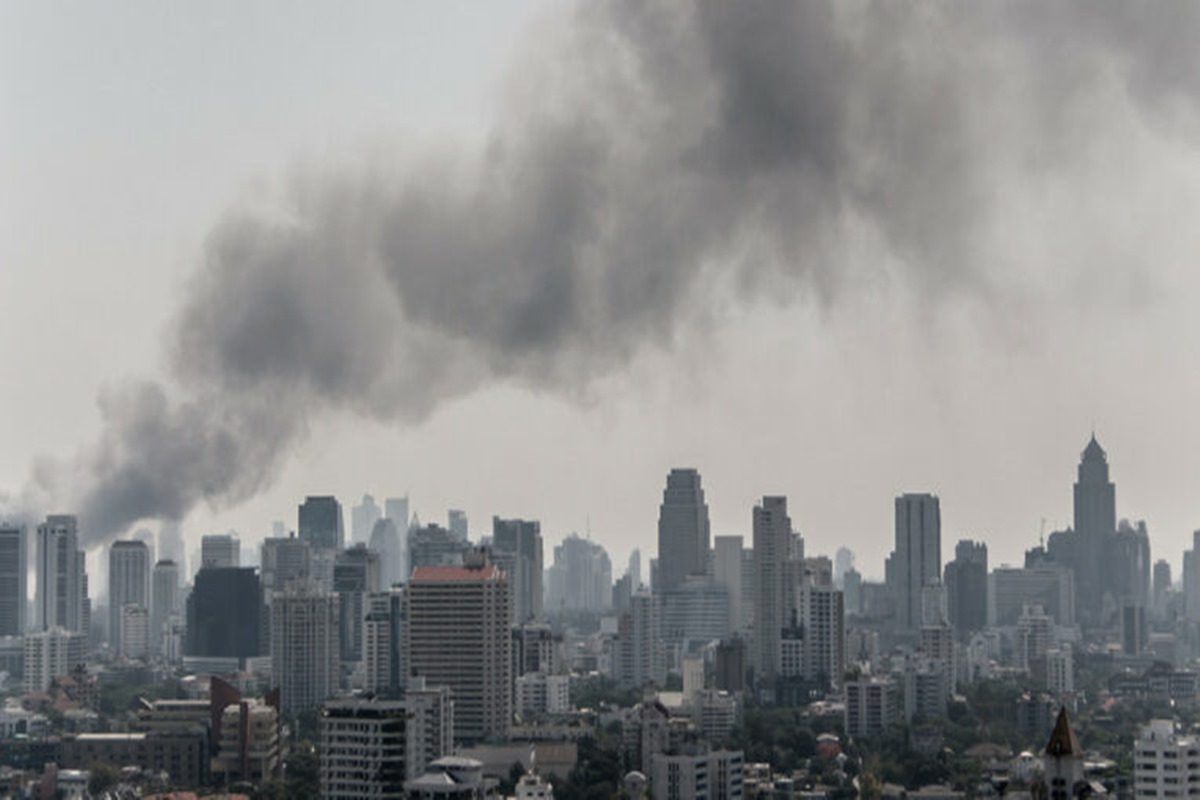Hyena hit by speeding vehicle, killed in Durgapur
Presence of a full grown striped hyena within Durgapur town sparked off sensation but the creature however fell victim of a hit-and-run case here early this morning.
Om Sher Bahadur, a patient from Nepal is struggling to negotiate with the growing air pollution in Durgapur.

Representation image
Om Sher Bahadur, a patient from Nepal is struggling to negotiate with the growing air pollution in Durgapur.
Failing to manage his increasing blood-cough that had increased within days of landing to Durgapur, Bahadur vanished from the sub-divisional hospital on Thursday morning. Physicians said Bahadur, a non-smoker never experienced such a breathing disorder before.
Advertisement
Biswadip Roy Chowdhury, a young entrepreneur of Bidhannagar locality here had left smoking 12 years ago and he suffered a sudden respiratory attack on Wednesday afternoon at his workplace. He said: “I felt utter discomfort in breathing with a pressure in the thorax part and had to take help of a breath analyzer for immediate relief.
Advertisement
Bidhannagar, close to the NH-19, is surrounded by a cluster of private iron and steel units, is gasping for quality air and recorded the highest presence of hazardous PM-10 of 256 mark at 1.55 pm in the ambient air yesterday. PM-10 is a particulate matter with a diameter of 10 micrometer or less and it generated by the ruthless operation of the industrial units. The WHO (World Health Organization) prescribed that presence of PM-10 shouldn’t exceed an average 15 micrograms per meter-cube in air in 24 hours.
“I’d quit smoking in 2008, but this year’s November has made me understand the severity of air pollution has gone bad making me feel as if I puffed least 30 cigarettes a day,” exclaimed another Bidhannagar resident Kobi Ghosh, secretary, Sports & Cultural Clubs Coordination Society here today. The organisation has set to demonstrate on Friday demanding clear air.
India’s National Clean Air Programme, launched in January 2019, seems to have fallen flat in major parts of Bidhannagar and greater Durgapur these days. At City Centre – key administrative corridor of the city, both – the PM-10 & PM-2.5 seemed moderate but, on Saturday afternoon, it’s recorded live AQI (air quality index) at 198, which was much above than the WHO prescribed level and AQI between 151-200 labels the air quality as ‘unhealthy inviting health hazards.’ At Bidhannagar the AQI measured by the West Bengal Pollution Control Board’s censors was 322 at 2.30 pm today but that was surpassed by 330 at Mahiskapur locality in the steel township.
AQI 330, according to the health experts, is equivalent to free smoking of about 15 to 20 cigarettes a day that leads to increased risk of respiratory issues, asthma, exacerbation and cardiovascular stress.
The West Bengal Pollution Control Board and the Durgapur Municipal Corporation meanwhile have opted for certain remedial measures to combat growing air pollution. The WBPCB’s regional authorities here have suspended operations of two privately owned induction furnace units at Bamunara industrial complex – about 3 km from Bidhannagar recently. Arup Dey, regional environmental engineer, Durgapur said: “They were consistently flouting norms despite repeated cautions.” He added: “Some thermal power units and some iron & steel units are under scanner.” The DMC meanwhile has pressed a mist cannon to control the flying SPM (suspended particulate matter) in the city environment.
“Sher Bahadur suddenly developed severe coughing with blood, which couldn’t be managed,” said Dr Dhiman Mondal, superintendent, sub-divisional hospital. Bahadur’s kin Ram Shrestha said, “He kept saying that he would return to Nepal as he’s failing to breathe here properly.”
The hospitals in Durgapur, in recent times have recorded influx of patients getting admitted with multiple pulmonary disorders. “Mostly we are getting patients of different age groups either with COPD (chronic obstructive pulmonary disease) due to the falling air quality, besides cases of broncho-pneumonia these days,” said Dr Shantanu Das, senior pulmonologist with a Bidhannagar based tertiary care hospital here.
Advertisement